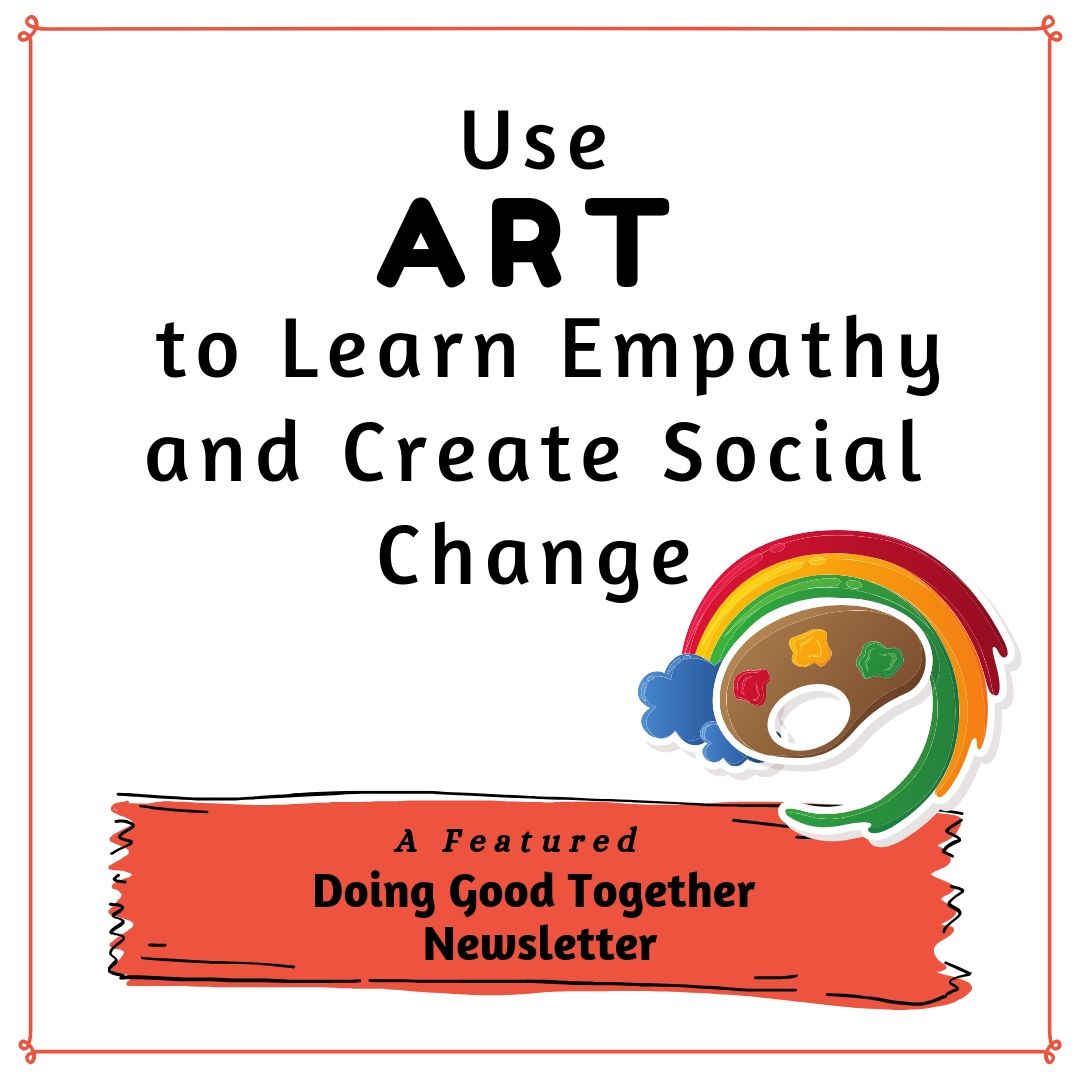USE ART TO LEARN EMPATHY AND CREATE SOCIAL CHANGE
For centuries, artists have created work that explores, reflects on—and advocates for—social issues. Art offers powerful opportunities to express our common humanity, challenge assumptions, spark conversation, connect diverse people, inspire wonder, imagine new solutions, and promote action for positive change. Music, dance, the visual arts, film, theater, and writing can also inspire empathy, which is why they have always played a role in social justice movements; art shifts the way people think about the world. Especially for youth, doing art can be a powerful way to give voice to their passions.
--- Jenny Friedman, Executive Director
ACTION
Prime your young artists (and your whole family!) to express themselves by seeing how other artists have used their skills to make a difference.
This collaborative art installation was created by attendees at DGT’s 2018 Festival of Giving
Share examples of creativity that's tied to a cause:
Knotted Gun sculptures bring attention to violence.
The Freedom Singers helped inspire the Civil Rights Movement.
This life-size glass sculpture draws attention to the invisibility of people experiencing homelessness.
Coloring Without Borders, a collaborative coloring book, highlights the plight of refugees.
Matt Black's photographs document poverty in the U.S.
Walk through a museum or gallery together and choose a few pieces that catch your eye. Practice empathy by imagining what the artist was trying to convey. Do the same when listening to music, watching a movie, viewing public art, or reading a book. Think too about what is going on for the subject of the work. When we begin to understand how someone else is feeling and how they might experience life differently, it encourages understanding--- and (when needed) can motivate us to search for innovative ways to help.
DGT has all sorts of artistic activities that kids can do to make the world a better place by spreading kindness or raising awareness about issues that matter to them.
Design and share these tear-off posters.
Leave small notes or handmade bookmarks in library books you return.
Compose car window poetry or create friendship bracelets.
Use sidewalk chalk to write uplifting messages or express feelings about an issue.
Add an artistic element to one of our at-home service projects to personalize your offering.
Share meaningful art with your representatives about an issue
Talk as a family about what injustices most concern you, whether in your own community or across the globe. Imagine how your family might use its artistic skills to inspire change. Then share your story with us!
CONVERSATION
Start a conversation about creative expression and advocacy.
Think about the books, movies, photographs, or paintings you've experienced. Which ones do you still remember and think about? Why do you think they made such a big impression?
What is your favorite creative activity? (drawing? painting? writing? sculpting? movie making? music?) How can you use this to advocate for a cause you care about?
Art is a powerful way to tell your story (or someone else's), and such stories are essential for social change. What story might you tell with your art?
Is it sometimes hard to share your art with others? Why or why not?
BOOKS
Drum Dream Girl: How One Girl's Courage Changed Music by Margarita Engle. Ages 4 and up. The inspirational story of how one little girl changed the world through her passion for drumming. Beautiful, vibrant illustrations.
Harlem's Little Blackbird: The Story of Florence Mills by Renee Watson. Ages 4 and up. A biography of Florence Mills, a powerful voice of the Harlem Renaissance, who used that voice to advocate for justice.
Maybe Something Beautiful: How Art Transformed a Neighborhood by by F. Isabel Campoy and Theresa Howell. Ages 4 and up. The touching story of how a community comes together to create beauty. Based on a true story.
INSPIRATION
"The arts empower. The arts give a voice to the voiceless. The arts help transform American communities and, as I often say, the result can be a better child, a better town, a better nation and certainly a better world. Let's champion our arts action heroes, emulate them and make our communities everything we want them to be."
— Robert L. Lynch, President, Americans for the Arts









